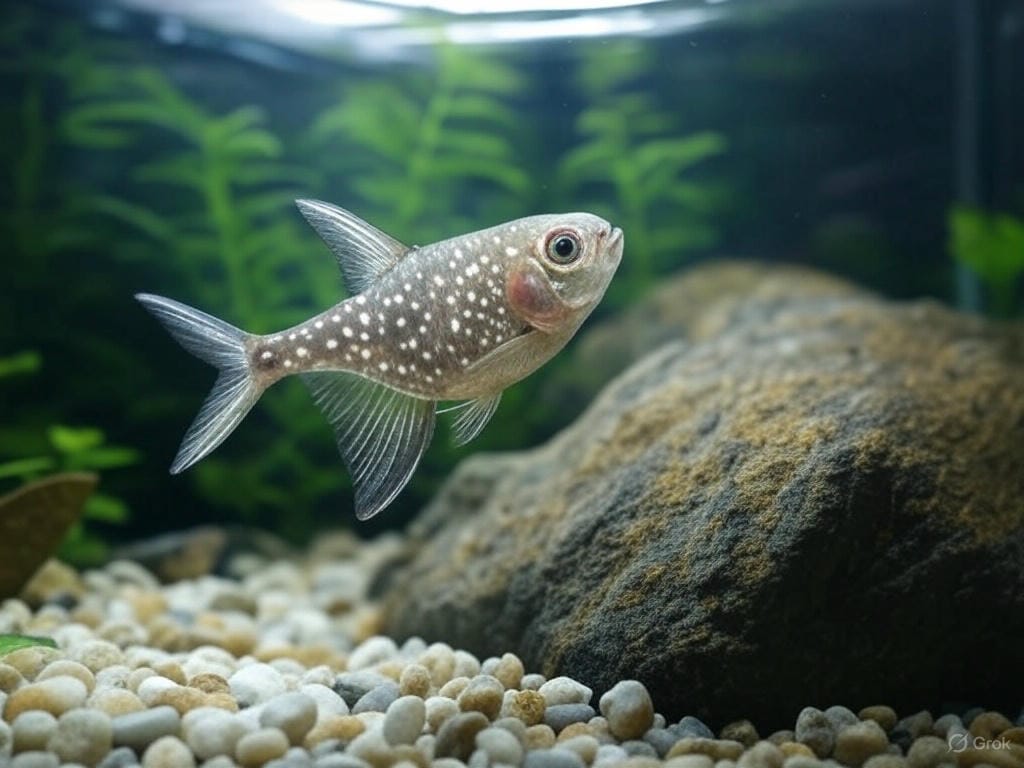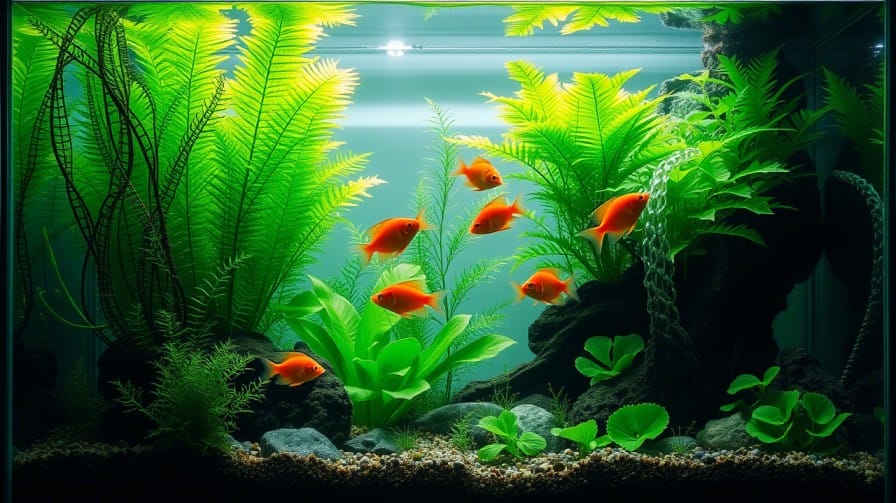
Notice tiny white spots on your fish? Ich (white spot disease) can turn deadly within days if untreated. But don’t panic—this actionable guide reveals exactly how to eliminate the parasite (Ich treatment ), dose medications safely, and protect your aquarium long-term. Follow these proven steps to save your fish and restore tank health!
Understanding Ich: The Parasite’s Lifecycle & Why It Matters
Ich (Ichthyophthirius multifiliis) thrives in stress-prone tanks, attacking fish through a 3-stage lifecycle:
- Trophont Stage: Parasites burrow into fish skin, creating visible white spots. They’re immune to treatments here.
- Tomont Stage: Spots fall off, forming cysts that release 1,000+ new parasites.
- Theront Stage: Free-swimming parasites hunt new hosts within 48 hours—this is when treatments work best.
Key Insight: Raising water temperature to 86°F (30°C) speeds the lifecycle from weeks to 4–5 days, making treatments faster and more effective.
Early Detection: 5 Critical Signs Your Fish Have Ich

- Salt-like white spots on fins, gills, or body (often mistaken for grains of sand).
- Flashing: Fish rub against rocks or gravel to relieve irritation.
- Labored breathing due to gill damage.
- Lethargy or hiding: Infected fish avoid activity.
- Rapid spread: One spot today can become 50+ in 72 hours.
Act Immediately: Delaying treatment risks 100% mortality in stressed tanks.
Step-by-Step Ich Treatment Protocol (With Exact Doses)

🚨 Day 1: Emergency Response
- 25% Water Change: Siphon debris from substrate.
- Raise Temperature: Gradually increase to 86°F (30°C) over 6 hours.
- Medicate: Add Ich-X (malachite green + formalin) at 5 mL per 10 gallons.
- Salt Boost: Dissolve 1 tsp/gallon of aquarium salt (half dose for scaleless fish).
🔥 Days 2–4: Attack Phase
- Daily 10% Water Changes: Before redosing medication.
- Monitor Spots: White cysts may increase temporarily as parasites emerge.
- Boost Aeration: Warm water holds less oxygen; add an air stone.
✅ Days 5–7: Break the Cycle
- Continue Medication: Theronts are now vulnerable.
- Check Gills: Use a flashlight—spots here often linger longest.
🛡️ Days 8–14: Prevention Mode
- Keep Temperature Elevated: Ensure all parasites complete their lifecycle.
- Carbon Filter Reset: After treatment, run carbon to remove medication residues.
Medication Guide: Safe Doses for Popular Treatments
| Medication | Dose per 10 Gallons | Safe for Invertebrates? |
|---|---|---|
| Ich-X | 5 mL | Yes |
| Copper Power | 0.5 mL | No |
| API Super Ick Cure | 1 Packet | No |
Pro Tip: For reef tanks, use Herbtana (herbal remedy) at 10 drops/gallon.
Best Ich Medicine for Sensitive Fish: Top Options and Dosing Tips

When treating ich (white spot disease) in sensitive fish—such as tetras, scaleless species (like loaches and catfish), or fish prone to stress—choosing the right medication and dosing is crucial for both safety and effectiveness.
Top Recommended Ich Medicines for Sensitive Fish
| Medicine | Key Features | Dosing for Sensitive Fish |
|---|---|---|
| Ich-X | Highly effective, safe for all fish (even scaleless), shrimp, snails, and live plants. Contains a less toxic form of malachite green. | Standard dose: 5 ml per 10 gallons. Do not reduce dose for sensitive fish; full strength is safe and necessary for efficacy. |
| Tetra Ick Guard | Fast-dissolving tablets, easy to use. Specifically allows for half-strength dosing for scaleless or sensitive fish. | 1 tablet per 10 gallons; use half strength for sensitive fish (½ tablet per 10 gallons). |
| API Super Ick Cure | Effective for both freshwater and saltwater, but not recommended for tanks with invertebrates. | 5 ml per 5 gallons; not specifically formulated for sensitive fish, so use with caution and monitor closely. |
Why Ich-X Is Often the Best Choice
- Ich-X stands out as the best ich treatment for sensitive fish because it is proven safe for all fish types, including scaleless and delicate species, as well as shrimp, snails, and live plants.
- The manufacturer and expert aquarists recommend using the full dose (5 ml per 10 gallons) even for sensitive fish, as half-dosing will not effectively kill the parasite.
- Ich-X’s active ingredient is a less toxic form of malachite green, minimizing stress and risk to sensitive fish.
How to Use Ich-X Safely
- Confirm Diagnosis: Make sure your fish actually have ich, not a similar disease.
- Remove Carbon: Take out activated carbon from your filter before dosing.
- Dose Properly: Add 5 ml Ich-X per 10 gallons of actual water volume (account for substrate and decorations).
- Repeat Dosing: Change one-third of the water and redose every 24 hours until no signs of ich remain.
- Monitor: If no improvement after 5 days, reconsider the diagnosis.
Alternative: Tetra Ick Guard for Ultra-Sensitive Fish
- Tetra Ick Guard fizz tabs are premeasured and allow for half-strength dosing, making them a good option for extremely sensitive or scaleless fish.
- Dissolve half a tablet per 10 gallons for sensitive fish, and repeat treatment every 24 hours until ich clears.
Additional Tips for Sensitive Fish
- Gradually raise water temperature (to 82–86°F/28–30°C) to speed up the ich lifecycle, but ensure your fish can tolerate the higher temperature.
- Increase aeration during treatment, as higher temperatures reduce oxygen levels.
- Use salt cautiously: While salt is effective for many fish, scaleless species may be sensitive to it. Always use a lower dose and monitor closely if you choose this route.
5 Foolproof Strategies to Prevent Future Outbreaks
- Quarantine New Fish: Isolate for 2–3 weeks.
- Temperature Stability: Avoid sudden drops below 75°F (24°C).
- Weekly Water Tests: Keep ammonia/nitrites at 0 ppm.
- Stress Coat Additives: Use aloe vera-based conditioners.
- UV Sterilizers: Kill free-floating parasites.
Did You Know? 80% of outbreaks stem from stress caused by poor water quality.
FAQs: Your Top Ich Questions Answered
❓ Can Ich Survive Without Fish?
No—parasites die within 48 hours without a host. Use this to sterilize equipment.
❓ Does Salt Harm Plants?
Yes. Remove sensitive plants like Java Fern during treatment.
❓ Can Humans Get Ich?
No—it’s strictly an aquatic parasite.
Final Thoughts
Ich is a formidable foe, but with swift action and this targeted approach, your fish can recover fully. Share your success story in the comments—or tag us on social media with before/after photos!
Act Now—Your Fish Are Counting on You! 🐠💙


